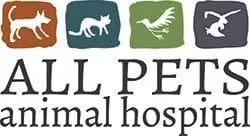A How To Guide to Reading Pet Food Labels
by Jessica Cantrell, DVM

This article will provide you with the knowledge to read a dog food label so you can learn to compare different dog food brands and select the diet that is best suited for your pup. Pet food labels are strictly regulated by the federal government. They are regulated by the Food and Drug Administration and the Department of Agriculture and must follow stringent guidelines dictated by those organizations. As per guidelines, the pet food label is separated into two pieces: the Principle Product Display and the information about the food.
Principle Product Display
The Principle Product Display, or product name, contains the brand name, the specific food or formula, the primary source of meat used, the age group the food is intended for (growing, adult, senior) and the species of animal the food intended for (dog, cat). The product’s weight in grams and ounces is also included.
How the product is listed on the label is strictly regulated. If the label says “Beef for Dogs,” at least 95% of the product must be the named meat (without counting moisture content). If the moisture content is included, at least 70% of the product must be the meat listed on the label. If the name lists more than one meat, for example “Chicken and Liver,” the two products together must be 95% of the product with the first ingredient being the most prevalent (moisture not included). If the amount of meat in the dog food is more than 25%, but less than 95%, a qualifier must be added. The words dinner, entrée, nuggets and formula are common qualifier words that are commonly seen on pet foods. Be sure to always check the ingredient list since a pet food that says “chicken formula” does not mean that beef or fish have not been added! To complicate things further is the newly approved use of the word “with.” In pet foods with such names as “Dog Food with Chicken,” since the word “chicken” follows the word “with,” that food must only have at least 3% chicken. Therefore, “Beef Dog Food” is very different than “Dog Food with Beef” – the first guarantees 95% beef, while the second statement as only guarantees 3% beef.

Informational Section
The informational section (very often on the back or side-panels of the bag) contains a list of ingredients, the guaranteed analysis, feeding instructions, and nutritional adequacy claim. This last claim is the MOST IMPORTANT part of the label especially for comparison of the nutrients in the product.
The list of ingredients must be in descending order – the most prevalent part of the diet is listed first, followed by each ingredient in order by weight. If you have a pet with kidney disease and need a low protein diet – consider selecting a food with several carbohydrates listed in the top 5 ingredients; or if your pet needs a high protein diet – consider a diet with the two first ingredients as meat products.
The guaranteed analysis section of the pet food label lists the amounts of each ingredient contained in the food. In most cases, the minimum amount of the ingredients is listed, not always the exact amount. When comparing pet food diets, you must take the moisture content into account. When comparing ingredient percentages, it is important to note whether you are comparing the percentages with or without moisture. To make a fair comparison, the ingredients should be compared on a dry matter basis. For example, if 82% moisture is present in the food, the remaining items comprise 18% of the diet. The minimum values listed for each ingredient (besides water) should be divided by 0.18 in order to get a dry matter amount. Another example is if the food has 75% moisture, then the remaining nutrients make up 25% of the food. Take each nutrient amount and divide by 0.25 to obtain and accurate dry matter amount to compare to the nutrient guidelines or when comparing foods.
Feeding Instructions: Each pet food will list how much food to feed per day. Most experts agree that these instructions far over-estimate a pet’s caloric needs and feeding your pet per bag instructions could result in a very overweight pet. In general, we advise to start by feeding 25% less than the bag recommendations and then monitor your pet's weight (increase or decrease appropriately). These recommendations are per day amounts, we recommend breaking the daily ration in two and feeding at least two meals about 12 hours a part.
Nutritional Adequacy Claims: Pet food labeling also lists a nutritional adequacy claim that lists the life stage for which the food is made (for maintenance/adult, for growth, for all life stages). If the pet food follows the guidelines set forth by the Association of American Feed Control Officials (AAFCO), the label will include a statement informing the buyer that the food provides a complete and balanced nutrition for a particular life stage, and it will list if the food is meant as a treat, supplement, or should be fed with other foods.

AAFCO
AAFCO, the Association of American Feed Control Officials is an organization whose primary function is to publish feed regulations, requirements and ingredient definitions. After extensive research, investigations, and feeding trials, nutrient profiles for pets were developed and the guidelines established. AAFCO lists the minimum and maximum levels of all nutrients (as excessive amounts of some nutrients can be toxic). They also define the “meaning” of certain ingredients, such as “meal” and “by-products” (see below).
When purchasing pet food, we recommend you select products that carry the statement "Formulated to meet the AAFCO Dog Food Nutrient Profile for..." since the food is guaranteed to at least follow these guidelines. It is NOT a requirement to meet AAFCO standards in order to sell pet food, so be wary when picking your pet’s food! Remember to check the labels and compare products.
Appendix AAFCO Profiles and Definitions
by Jessica Cantrell DVM and Juliette Veenstra, RVT
Current AAFCO Dog Food Nutrient Profiles
For Adult Maintenance
Unless otherwise listed, all values are minimum requirements:
Protein.........18%
Fat..............5.5%
Calcium......0.6% (maximum 2.5%)
Phosphorus...0.5% (maximum 1.6%)
Potassium.....0.6%
Sodium........0.06%
Chloride.......0.09%
Magnesium.....0.04% (maximum 0.3%)
Iron............80 mg/kg (maximum 3,000 mg/kg)
Copper.........7.3 mg/kg (maximum 250 mg/kg)
Manganese........5 mg/kg
Zinc...........120 mg/kg (maximum 1000 mg/kg)
Iodine.........1.5 mg/kg (maximum 50 mg/kg)
Selenium......0.11 mg/kg (maximum 2 mg/kg)
Vitamin A.....5000 IU/kg (maximum 250,000 IU/kg)
Vitamin D......500 IU/kg (maximum 5000 IU/kg)
Vitamin E.......50 IU/kg (maximum 1000 IU/kg)
Thiamine.........1 mg/kg
Riboflavin.....2.2 mg/kg
Pantothenic Acid..10 mg/kg
Niacin..........11.4 mg/kg
Pyridoxine.........1 mg/kg
Folic Acid......0.18 mg/kg
Vitamin B12.....0.022 mg/kg
Choline.........1200 mg/kg
For growing puppies, pregnant and lactating bitches
The majority of nutrient minimums are the same except for the items listed. The maximum for those listed does not change.
Protein...........22%
Fat................9%
Calcium............1%
Phosphorus.......0.8%
Sodium...........0.3%
Chloride........0.45%
Vitamin B12....0.022 mg/kg
Current AAFCO Cat Food Nutritional Profiles
(based on dry matter)
Protein.........26%
Fat..............9%
Calcium......0.6% (maximum 2.5%)
Phosphorus...0.5% (maximum 1.6%)
Potassium.....0.6%
Sodium........0.2%
Chloride.......0.3%
Magnesium.....0.04%
Iron............80 mg/kg
Copper.........5 mg/kg
Manganese........7.6 mg/kg
Zinc...........75 mg/kg
Iodine.........0.6 mg/kg (maximum 9mg/kg)
Selenium......0.3 mg/kg
Vitamin A.....3332 IU/kg (maximum 333300 IU/kg)
Vitamin D......280IU/kg (maximum 30080IU/kg)
Vitamin E.......40 IU/kg
Thiamine/Vitamin B1.........5.6 mg/kg
Riboflavin/Vitamin B2.....4.0 mg/kg
Pantothenic Acid..5.75 mg/kg
Niacin/Vitamin B3..........60 mg/kg
Pyridoxine/Vitamin B6.........4.0 mg/kg
Folic Acid......0.8 mg/kg
Cyanocobalamin/Vitamin B12.....0.020 mg/kg
Choline.........2400mg/kg
For growing kittens, pregnant and lactating dams
The majority of nutrient minimums are the same except for the items listed. The maximum for those listed does not change.
Protein...........30%
Calcium............1%
Phosphorus.......0.8%
Magnesium.......0.08%
Copper.......15 mg/kg
Iodine.......1.8 mg/kg
Vitamin A....6668 mg/kg
AAFCO Ingredient Definitions.
For the full text of definitions, visit the AAFCO Website
Meat*: clean skeletal muscle, tongue, diaphragm, heart or esophageal tissue. May contain some of the “accompanying and overlying fat and portions of the skin, sinew, nerve, and blood vessels which normally accompany the flesh.”
Meat by-products: Non-rendered, clean parts other than “meat” (as defined above). This can include the lungs, spleen, kidneys, brain, liver, blood, bone, partially defatted low-temperature fatty tissue, stomach and intestines cleaned of contents. “It does not include hair, horns, teeth and hoofs.”
*In addition to the term “meat,” the manufacturer may specify the species from which the meat is derived, such as “beef” or “pork.” If the ingredient is listed merely as “meat,” it can only be from cattle, pigs, sheep or goat. If any other species are used in the manufacture of the pet food, they must be declared on the label.
Poultry: Clean combination of flesh and skin with or without accompanying bone. Does not include feathers, head, feet or entrails.
Poultry by-products: Non rendered clean parts of carcasses of poultry such as internal organs, heart, gizzard, liver, heads, feet, intestines (cleaned of contents and foreign matter)
Meat/Poultry/By-Product “Meal”: Similar to above however the named products have been rendered, a process by which the ingredients are subject to heat and pressure to destroy any existing bacteria before being shipped to food plant. In the process, most of the water and fat are removed leaving primarily protein and minerals. While the resulting ingredients are “unappealing” to human sensibilities, they are high in nutrition and appealing to animal palates. In addition, the products are ground into uniform sized particles resulting in the term “meal.”
The element listed before the term “meal” refers to which ingredient has been rendered and ground up to form meal (as per definitions above).
For example, “Beef Meal” is clean skeletal muscle, tongue, diaphragm, heart of esophageal tissue that has been rendered of bacteria, fat and water and has then been ground up before adding to the pet food.
NOTE: “Meat Meal” can contain species other than cattle, sheep, goats and pig. If the manufacturer specifies the meat source, however, the rendered product
Misconceptions:
By-Products can contain hair, horns, teeth and hooves: This is not true and is specifically listed as such on the AAFCO guidelines.
By-Products contain garbage organs not fit for human consumption: While it is true that by-products contain organs such as kidneys, brain and heart that Americans do not normally consume, this is merely due to human preference. These organs are perfectly safe, nutritious, and even preferred by animals.
If the protein source is simply listed as “meat” it can contain any number of species, including euthanized dogs and cats: AAFCO guidelines specifically state that “meat” must be from cattle, pork, sheep or goats (except “meat meal” – see above). Despite a virulent rumor that circulated several years back, no investigation was ever able to find DNA evidence of any AAFCO compliant pet food company using any dog or cat tissue.
Meat Meal is filler and not nutritious. Meat Meal IS meat. Because it is rendered of its water and fat content, it is actually very high in protein and minerals, making it a very useful addition to pet foods.



